Readers of this magazine know that I put a great emphasis on good seamanship and safety when aboard. This was one of the biggest issues for me when I was initially looking out for a good sailing school back then when I began my yachtmaster education and training. I finally found the perfect sailing school for myself and I didn´t regret spend an extra dime on a thorough training. Recently, when I left harbor for my first ever sailing trip as boat´s skipper, I took something with me to give it a thorough test: An exposure suit made for the real hardcore offshore survival experience. This is how it feels like.
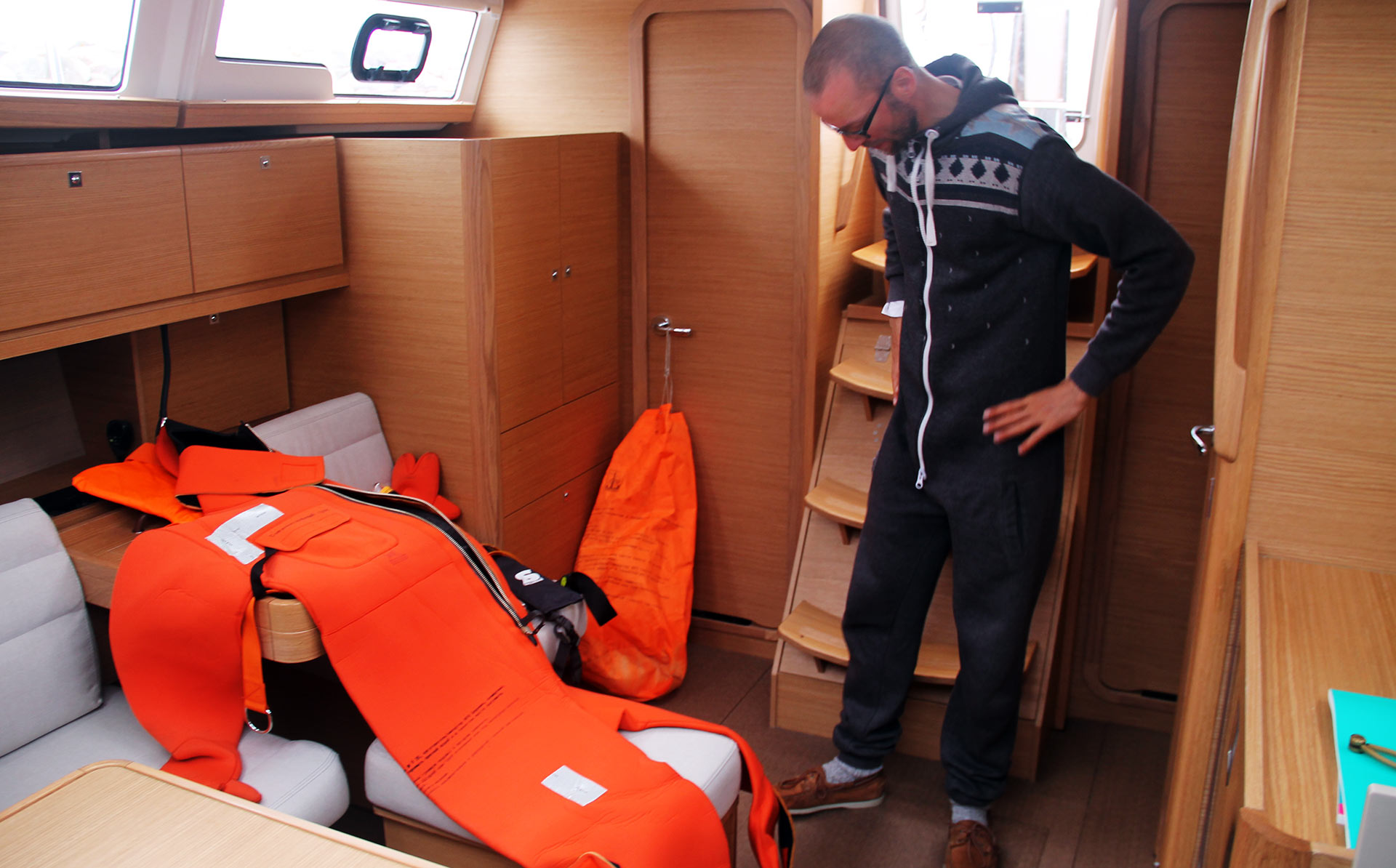
This survival suit was made in Russia some 15 years ago – a heavy duty, heavy-weight suit that cozuld easily be among the regular equipment on Russian submarines I guess. Don´t know how the boss of my sailing school managed to get one of these but when I unboxed it laid it down in the saloon to have a look I instantly felt safer: This suit is robust, heavy-garments and seams, thick neoprene-like material and a lot of buckles with Velcro-tape. Weather was perfect for a test: 10 degrees Celsius outside temperature, water well below 10. It was freezing cold with light rain. Let´s go!
Getting on an Exposure Suit in an Emergency
Upon command “ready for casting off” and until the boat has landed safely and is tied to the pier side under my command wearing a life jacket (properly, with crotch strap, of course!) is customary. Nevertheless, there can be moments when even a life jacket proof to be of no help – when temperatures are down and going into the water leaving a ship in distress means a sure death by freezing to unconsciousness. This is where the survival suit comes into play.
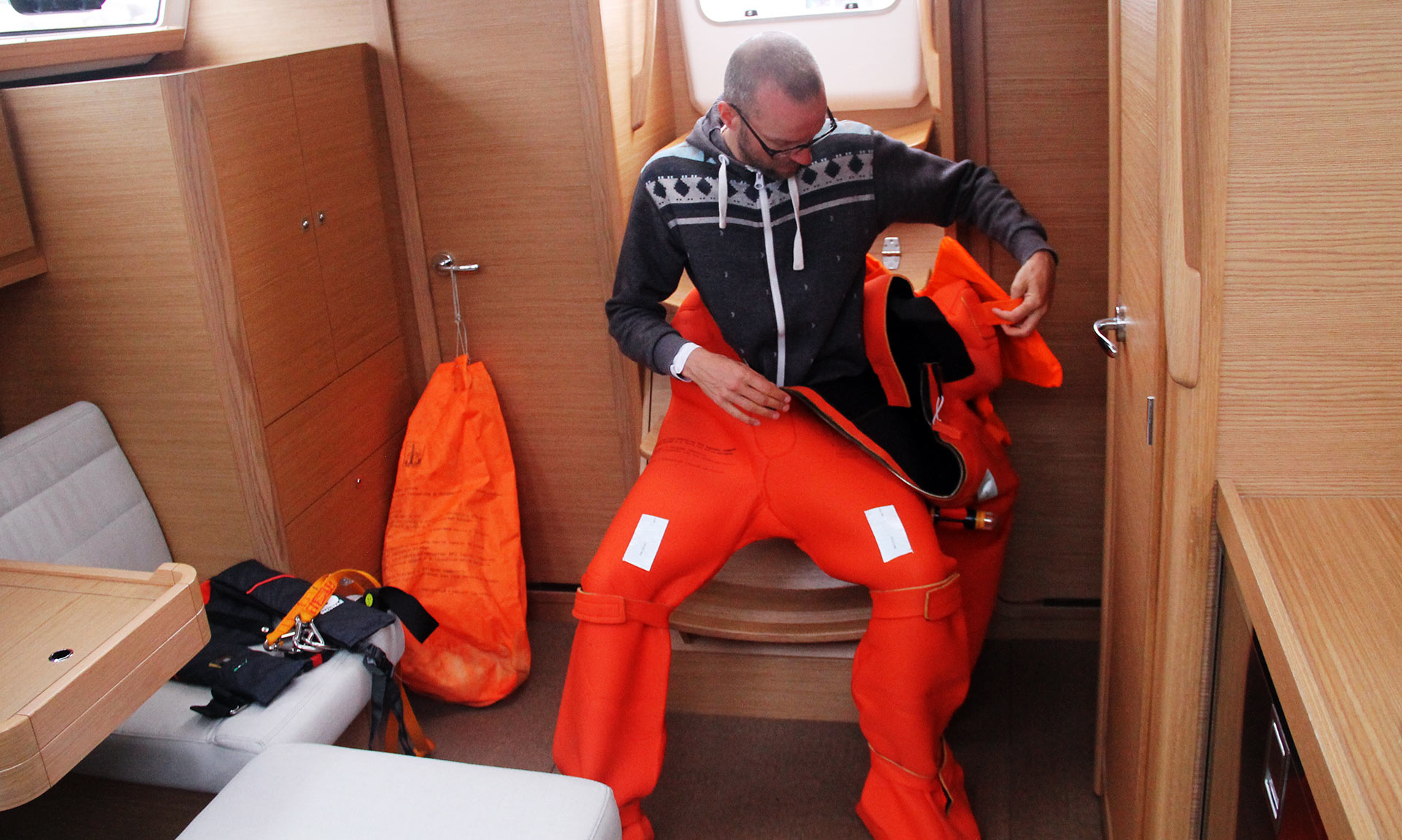
This exposure suit weighs in at some 10 to 15 kilograms. Pretty heavy, indeed. Putting it on is a no brainer since you just wear it like a One-Zee jump suit: Legs fist, pull it up the waist and close the zipper. This zipper will go up as far as to your jar. Since this very survival suit had a gloves with just three fingers – which makes sense since two fingers will stay warmer than just one alone – it´s a bit tricky to grab the zipper, but eventually it worked out just fine.
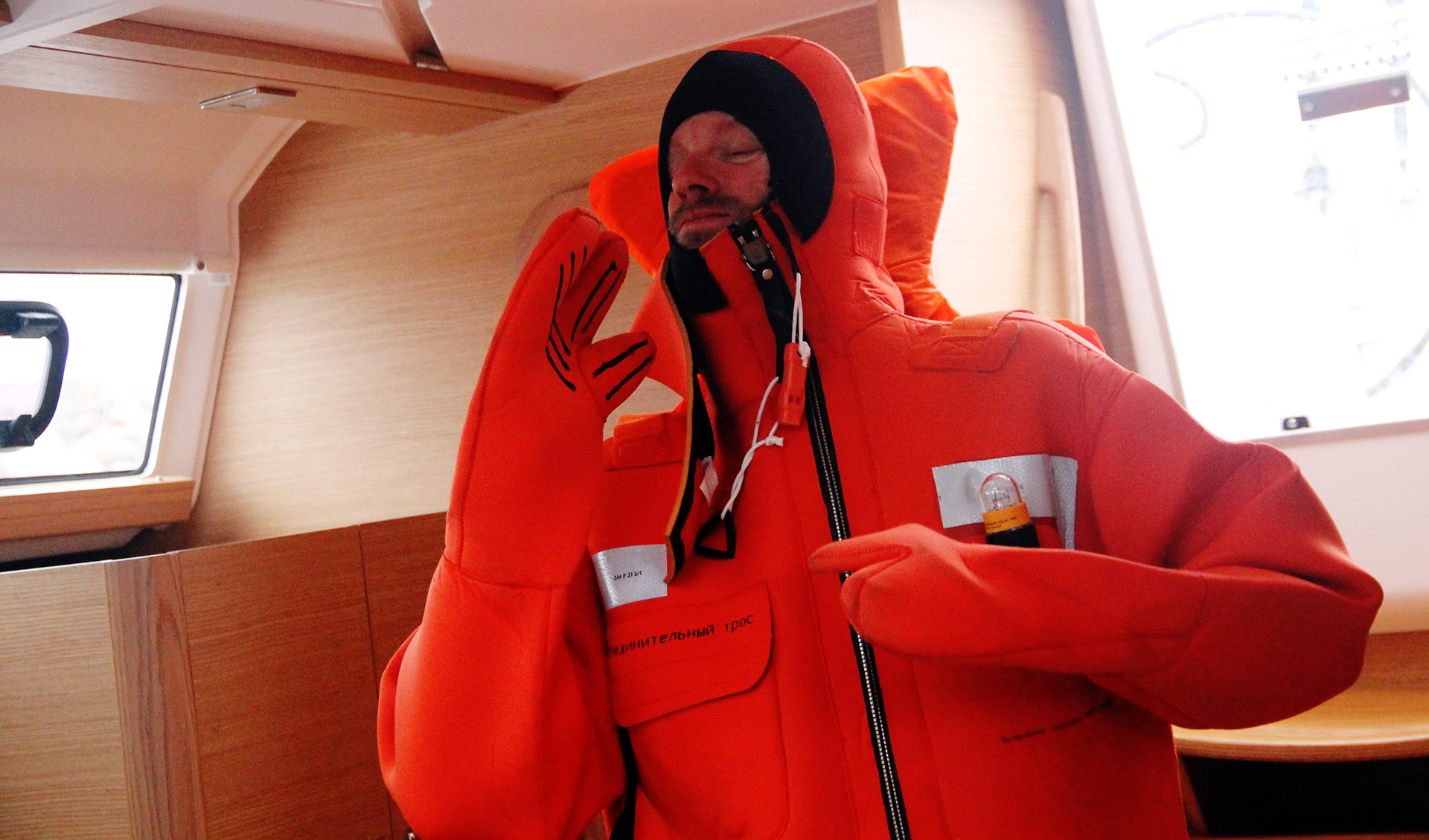
There are five straps of Velcro-tape. Two down at the feet. You just wrap it around the ankle and fasten it tightly, each another one around the limbs and finally a big one that will go right over your mouth as far as covering half of your face. This is finally the most important one as it seals off the inner environment of the exposure suit from the outside, trapping air inside the offshore exposure suit – no ned for an extra floating device nor for a live jacket. Ready to abandon ship!
Abandoning Ship in a Survival Suit
That´s easier said than done: Walking around in this offshore survival suit is not easy. I cannot imagine the trouble you will have wearing one of these in heavy swell and inside a rolling, damaged boat. It just took me under five minutes to unpack the suit and get myself in, but I don´t want to think about doing this in panic-mode inside a sinking yacht …
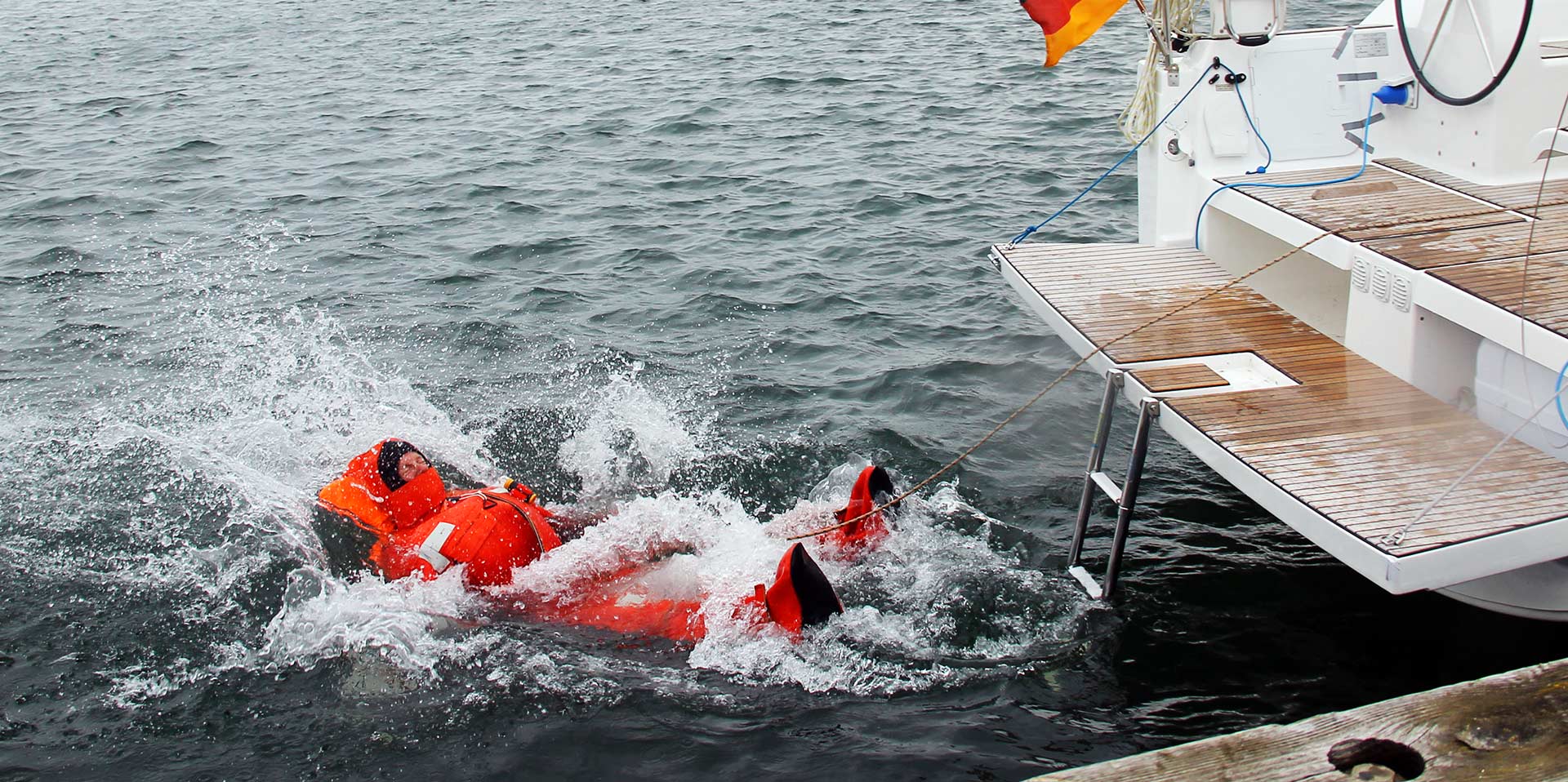
When I went outside, going upstairs the four stairs of our entryway from the saloon to the deck of the yacht was an awkward experience: Walking around in this thing is not easy, partially because of the heavy weight, partially because the garment of the exposure suit is certainly not made for walking. I didn´t wear shoes, you shouldn´t either because sharp edges can damage the suit, so I was on socks. A pretty strong cold and wind was blowing and when I began to climb down the bathing ladder into the water I was holding my breath: Will the suit flood with ice cold water? Will it be cold anyway?
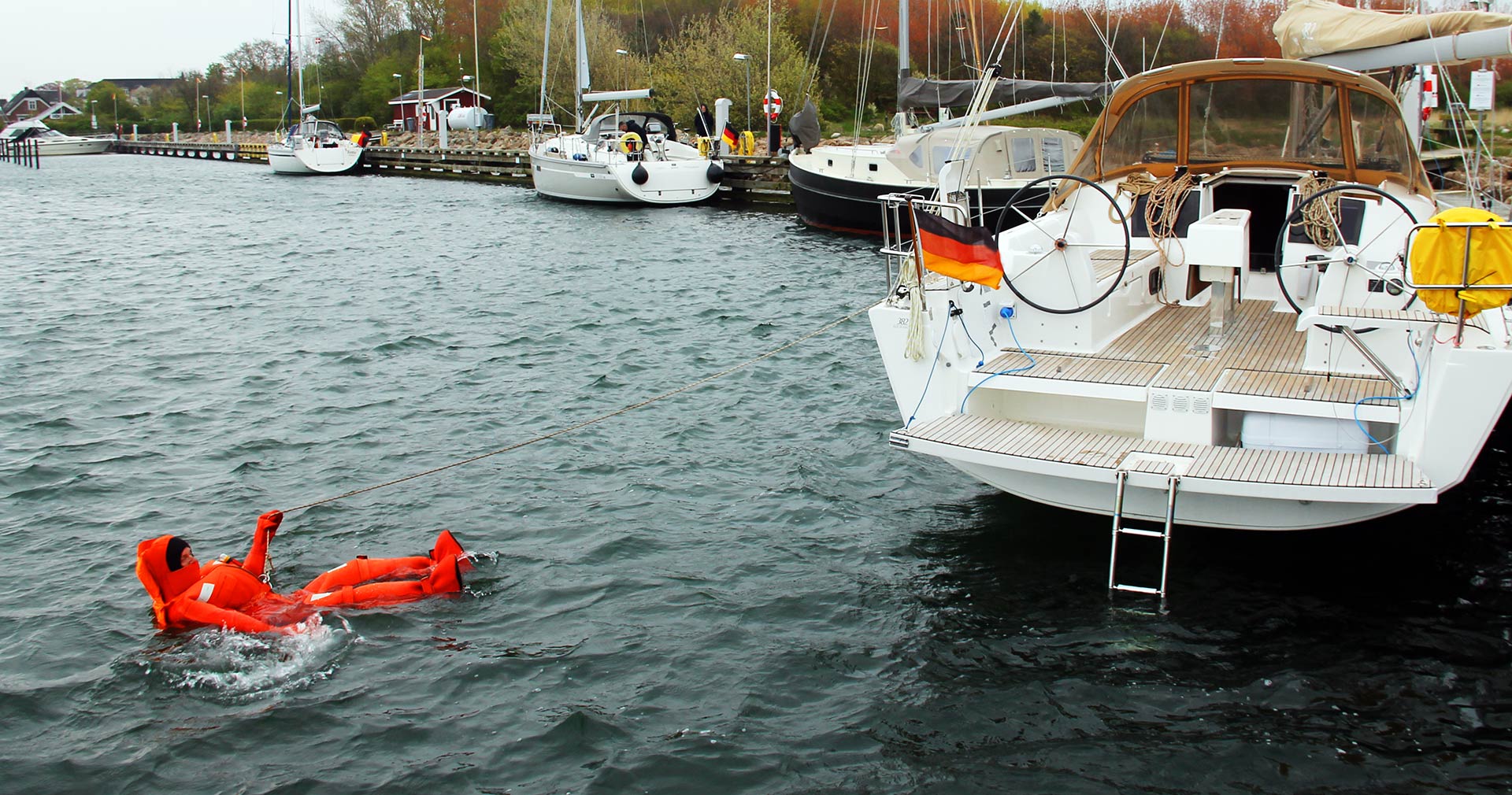
Nothing of the mentioned! When I “sat” down in the water and let myself float, the suit put me in drifting position instantly. At first it was an awkward sensation feeling the water pressure at my legs, but when I finally laid in the Baltic sea water and drifted around, there was an instant feeling of pure … joy. Believe me! No sudden and no slow drop in temperature whatsoever, not a single drop of water entering the exposure suit´s internal. Just floating around in a perfect warm local mini-environment.
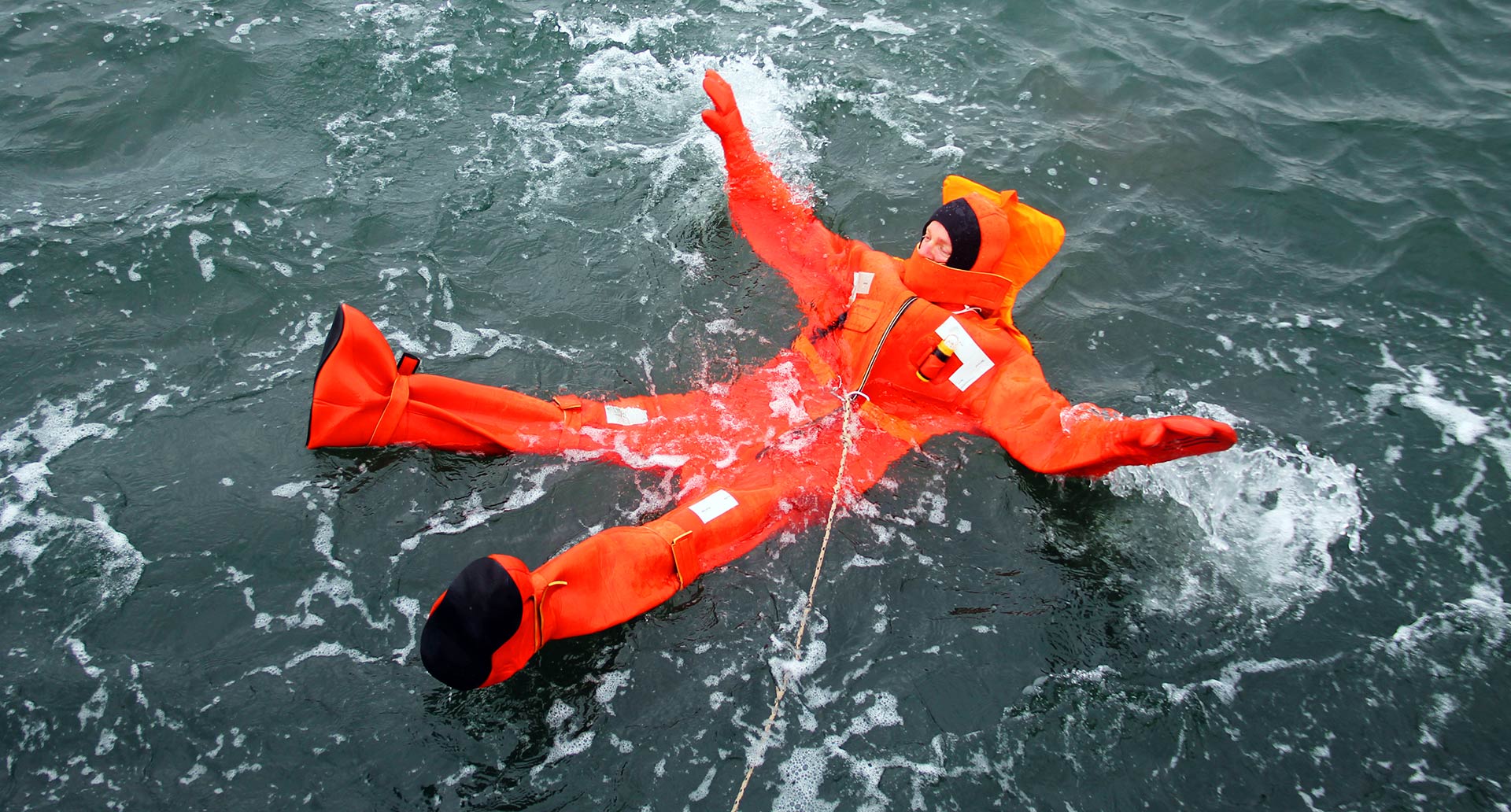
I “simulated” heavy weather by struggling hard and making my own waves. The suit bumped around, drowning legs or arms now and then, of course spray covered my face, but never did it go under water nor – again – did a single drop of water enter the exposure suit´s inside. On the contrary: It took me no two minutes to find trust to this product. The trapped air inside and the small floating-help stitched to the suit´s back is perfectly fine in creating sufficient buoyancy to hold my body on the surface of the water. As clumsy this suit survival feels when outside of the water, the better it feels once inside: You can move without restraint and with ease, backstroking is no problem at all.
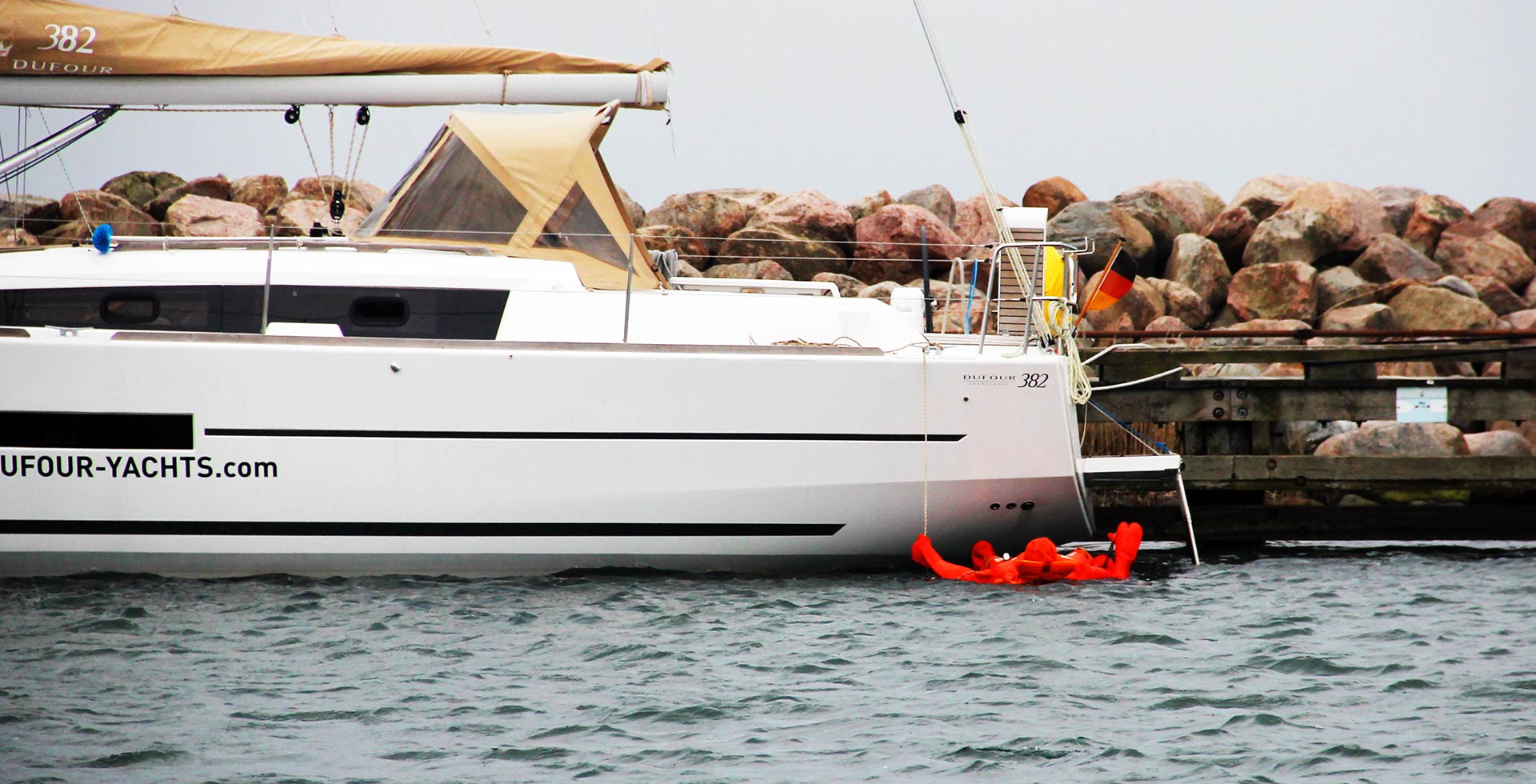
I was drifting around the stern of our sailing yacht for a couple of minutes, secured by a line. I imagined being in distress, somehow reaching a rescue vessel. Even if our yacht (a Dufour Grandlarge 382) was measuring “just” 36 feet, I was awed by the high freeboard. Positioning myself at the stern under the chines was impressive – and frightening. Being here in heavy weather with a rolling ship trying to rescue me, these chines are a definitive hazard as you may be forced under the hull and crushed by the heavy rolling ship, beaten into unconsciousness. The same goes for the bathing platform: Grabbing the ladder and re-entering the boat was a no-brainer. But swimming here and avoiding being hit by this massive thing in a real event of distress will be top-priority, though this is another and different topic.
Leaving the Yacht in an Emergency: What I´ve learned
What did I learn? First of all, it was a very, very impressive in helpful experience indeed. Just as I regard it as important not to just wear a live jacket but to try out one (read about it here) this experience gave me a first-hand insight into how it really feels having to put on an offshore survival suit. When you are sailing in colder waters, like the North Sea, Baltics or the Southern and Atlantic Ocean, having exposure suits like this (or slightly more modern versions) is definitely something to consider when outfitting your yacht with safety equipment.

Whether you organize a Russian offshore survival suit like this one, which was working just neatly and perfectly well, or you get a more modern, sailing-made exposure suit is up to you: Brand new products will come in with a price tag starting at some 700 Euros. Again, having one aboard when going up North or well down South is if you ask me a customary piece of safety equipment aboard, also, when you like sailing in winter time and well offshore, an exposure suit like this will enhance safety capacity of your boat significantly.
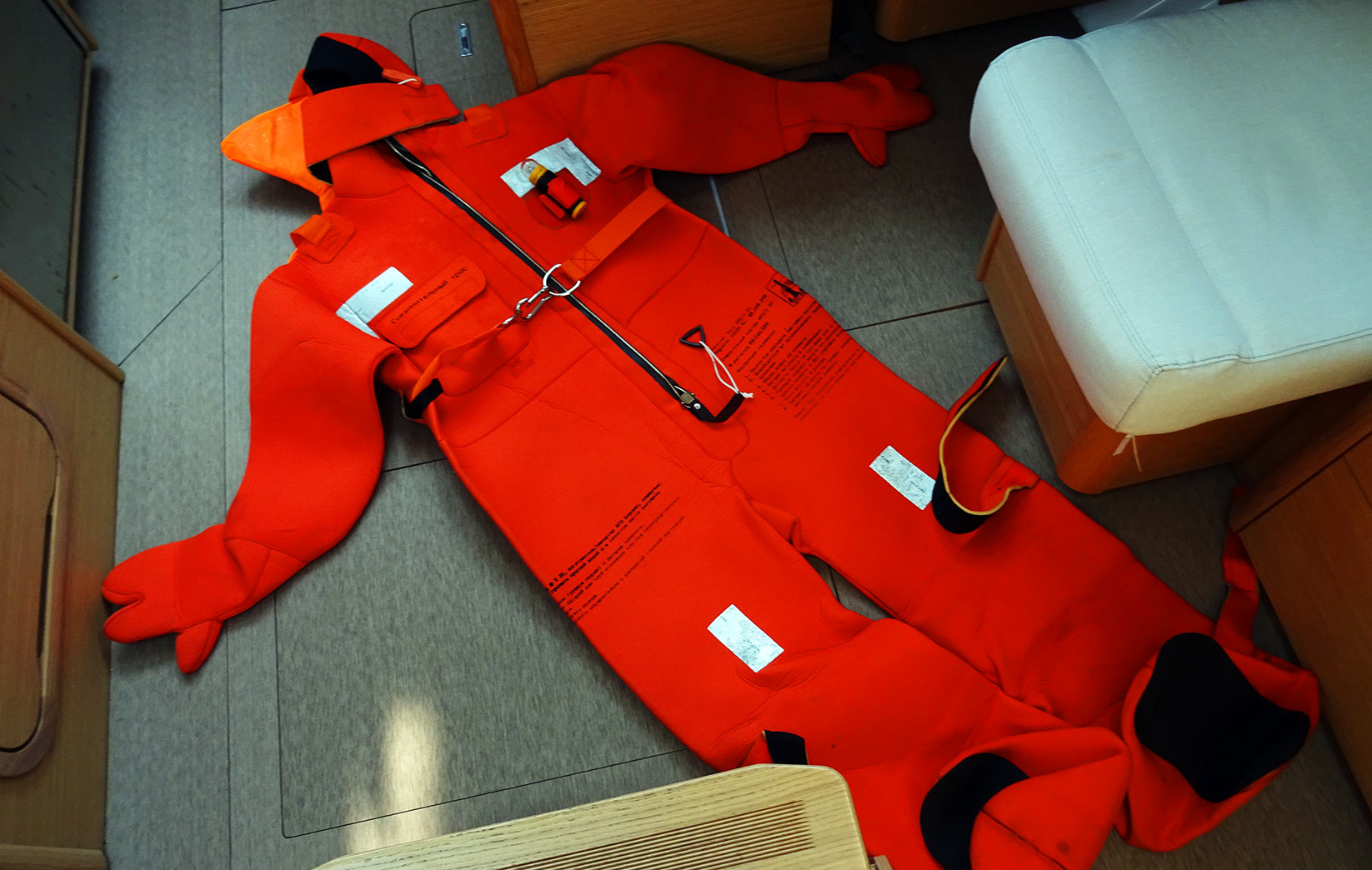
Personally I judge this experience a precious one as I now know how it feels like when a life jacket goes off and inflates as well as how it feels leaving the yacht in distress in a full-mode exposure suit. Having done this (and peeling myself out of the suit perfectly dry) I´ve decided to enlist myself for the ISAF-certification next, a course specially tailored to reacting to all sorts of catastrophes happening to an oceangoing yacht. For now, comrads, I put away the Russian Submarine exposure suit and have a fresh & hot coffee.
Other interesting articles on that topic:
MOB-Drills
Basic Life Support Measures for Sailing Children
How it´s made: A Secumar-Live Jacket
